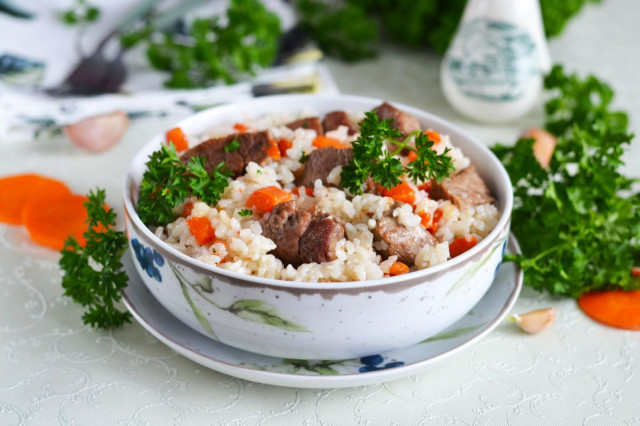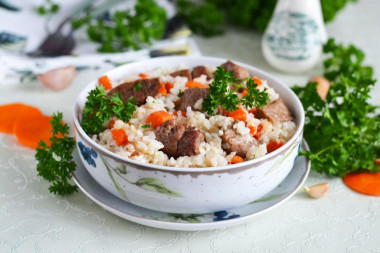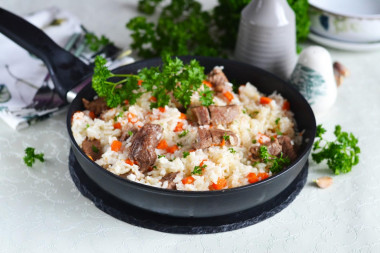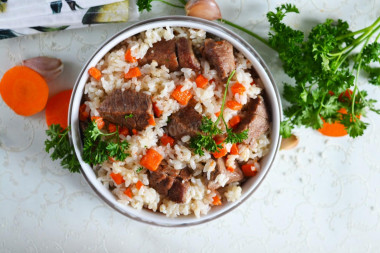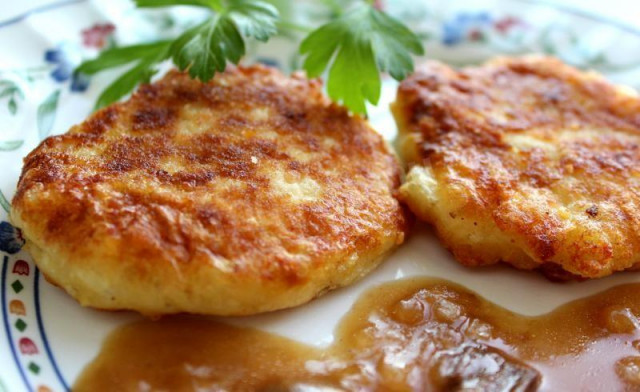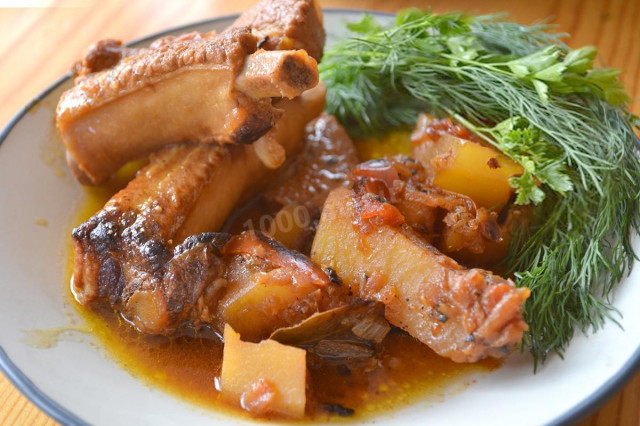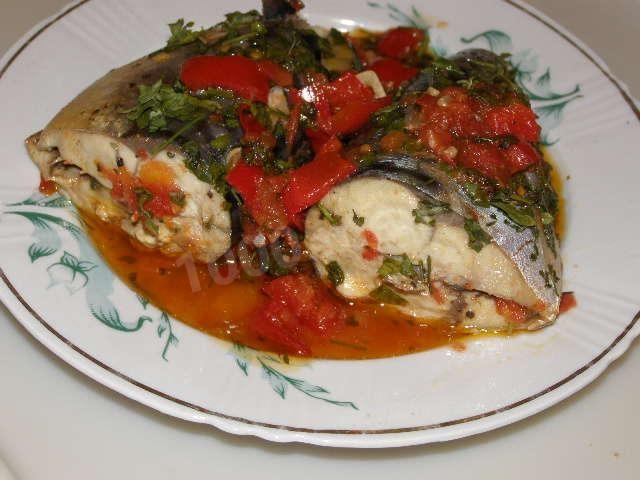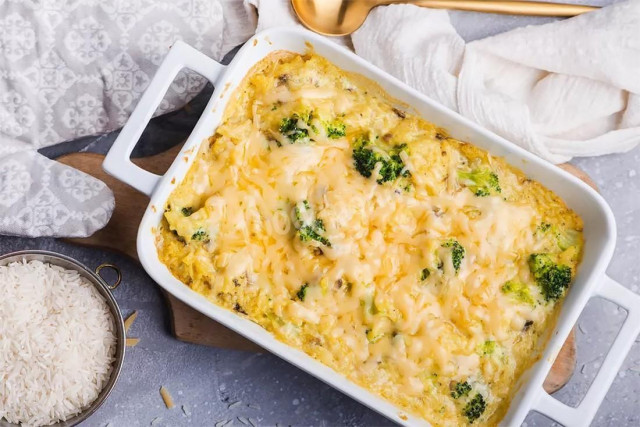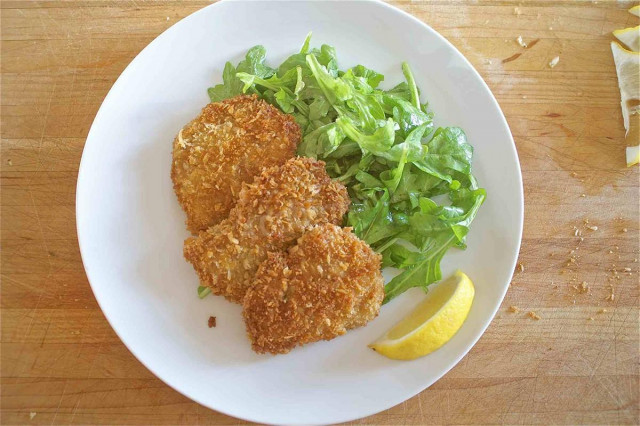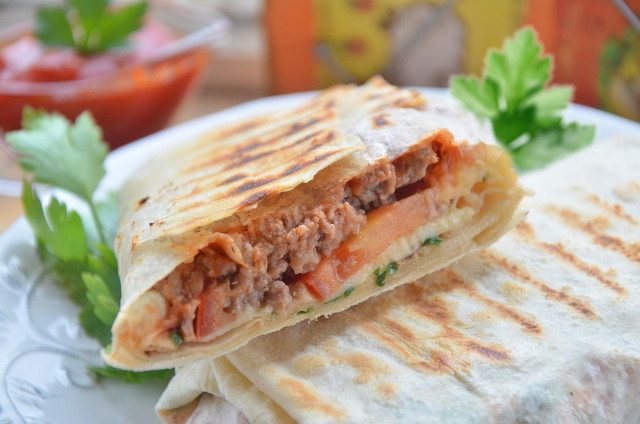Composition / ingredients
Step-by-step cooking
Step 1:
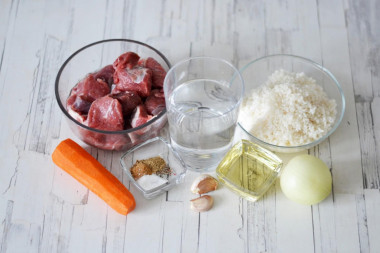
How to make beef pilaf in a frying pan? Prepare the necessary ingredients. Beef is needed in the form of pulp without bones. Rinse the garlic cloves, do not peel the husks. If desired, you can use not individual cloves, but a whole small head of garlic, which also needs to be cleaned from the upper thin husk and thoroughly rinsed.
Step 2:

Wash the beef, cut into medium cubes. I had already sliced beef goulash.
Step 3:
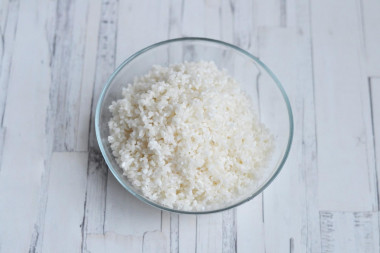
Rinse the rice thoroughly until clear water and dry. It is better to take special rice for pilaf. It won't boil.
Step 4:
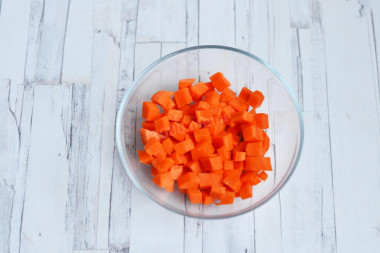
Peel the carrots and cut them into small cubes.
Step 5:
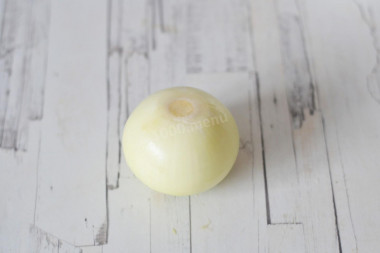
Peel the onion. If desired, you can use the onion as a whole, like me, or cut into small cubes and fry together with carrots (step 6).
Step 6:
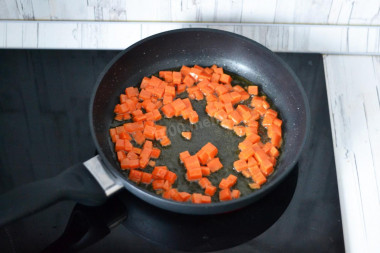
Heat vegetable oil in a frying pan, put the carrots and fry for 5-6 minutes. If you want to add chopped onion, add it along with carrots.
Step 7:
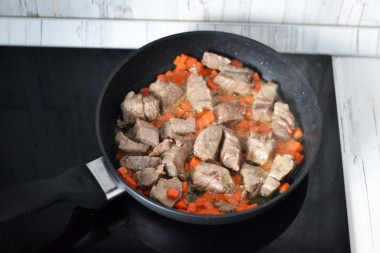
Add the beef and fry, stirring, for about 10 minutes until golden brown.
Step 8:
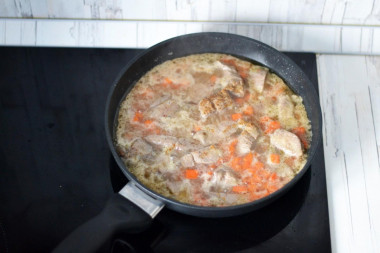
Pour in a glass of boiling water. Sprinkle the meat with pilaf spices, salt and pepper.
Step 9:
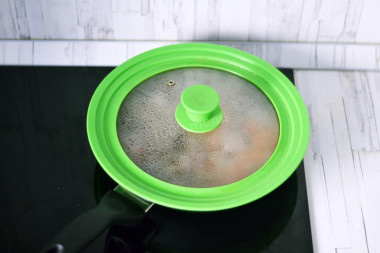
Reduce the heat to medium and simmer the meat for 20-25 minutes under the lid until excess moisture evaporates.
Step 10:
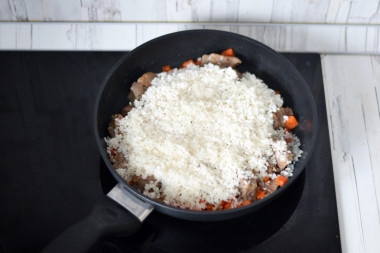
Pour in the washed rice. It is not necessary to mix it with beef, the grits should be on top of the meat.
Step 11:
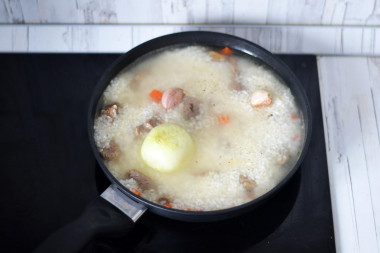
Pour in the remaining 500 ml of hot water, Stick a whole onion into the rice, if you haven't added it before in crushed form, as well as whole garlic cloves. Lightly season with salt and pepper.
Step 12:
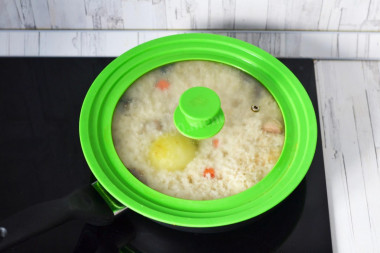
Simmer under the lid on high heat for 10-15 minutes. Then reduce the heat to a minimum and simmer the pilaf until the liquid has completely evaporated. Remove the finished pilaf from the heat and let it stand under the lid for 10 minutes.
Step 13:
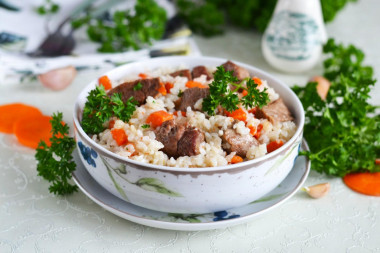
Put the finished pilaf on plates, if desired, sprinkle with chopped herbs and serve to the table. Bon appetit!
Since the degree of salinity, sweetness, bitterness, sharpness, acid, burning is individual for everyone, always add spices, spices and seasonings, focusing on your taste! If you put some of the seasonings for the first time, then keep in mind that there are spices that it is especially important not to shift (for example, chili pepper).
If you use ready-made spice mixes, be sure to read the composition on the package. Often, salt is already present in such mixtures, take this into account, otherwise you risk over-salting the dish.
Beef can be replaced with any other type of meat that you like best. But keep in mind that the cooking time, as well as the taste and calorie content of the dish will change. Pork and lamb tend to be fatter than beef, and chicken fillet or turkey are leaner. At the same time, the cooking time depends not only on the type of meat, but also on which part of the carcass is used and how old or young the meat is.
Caloric content of the products possible in the composition of the dish
- Onion - 41 kcal/100g
- Melted beef fat - 871 kcal/100g
- Fat beef - 171 kcal/100g
- Lean beef - 158 kcal/100g
- Beef brisket - 217 kcal/100g
- Beef - okovalok - 380 kcal/100g
- Beef - lean roast - 200 kcal/100g
- Beef shoulder - 137 kcal/100g
- Beef - ribs - 233 kcal/100g
- Beef - ham - 104 kcal/100g
- Beef - tail - 184 kcal/100g
- Boiled ham - 269 kcal/100g
- Beef corned beef - 216 kcal/100g
- Raw wild rice - 353 kcal/100g
- Brown raw rice - 360 kcal/100g
- Boiled brown rice - 119 kcal/100g
- White fortified raw rice - 363 kcal/100g
- White fortified boiled rice - 109 kcal/100g
- White rice, steamed, with long grains raw - 369 kcal/100g
- Steamed white rice, boiled with long grains - 106 kcal/100g
- Instant dry rice - 374 kcal/100g
- Instant rice, ready to eat - 109 kcal/100g
- Fig - 344 kcal/100g
- Carrots - 33 kcal/100g
- Dried carrots - 275 kcal/100g
- Boiled carrots - 25 kcal/100g
- Garlic - 143 kcal/100g
- Ground black pepper - 255 kcal/100g
- Vegetable oil - 873 kcal/100g
- Salt - 0 kcal/100g
- Water - 0 kcal/100g
- Spices dry - 240 kcal/100g

